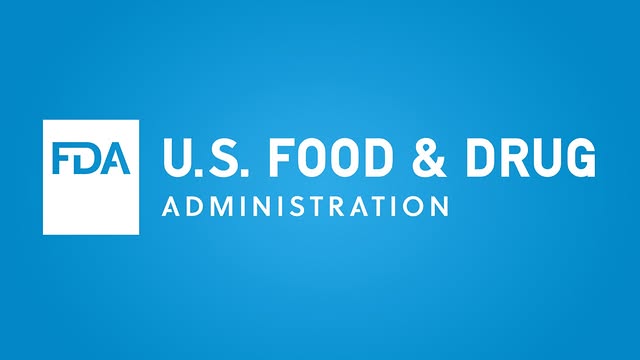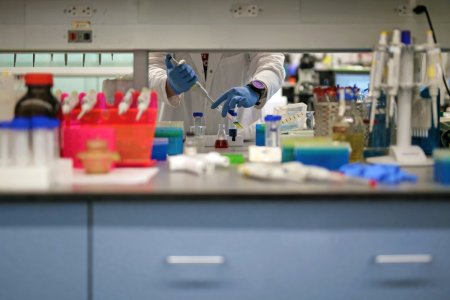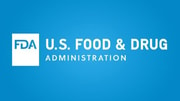
Imagine this: A diagnosis of a rare genetic disease no longer feels like the end of the road, but the start of a new chapter—one filled with possibility, precision, and the promise of a treatment designed just for you or someone you love.
That future isn’t science fiction anymore. It’s inching closer to reality, thanks to a bold new initiative from the US Food and Drug Administration (FDA).
When a family member or friend is facing a devastating diagnosis, every moment matters. Yet for countless families, hope has been forced to wait—stalled by slow-moving approval timelines while innovative therapies sit on the sidelines.
Now, the FDA is rewriting that story. With its plans to fast-track pathway for personalized treatments, the agency is aiming to cut through the red tape and bring life-saving solutions to patients faster than ever before.
When traditional trials just don't work
In a groundbreaking update published in the New England Journal of Medicine, FDA leaders Marty Makary and Vinay Prasad revealed a major shift in how the agency evaluates treatments for rare and life-threatening genetic conditions.
Under this new approach, the FDA can now greenlight highly personalized therapies using clinical data from only a small number of patients. It’s a bold departure from the traditional model, which has long required large-scale trials and years of data before approval.
For families waiting on hope, this change could mean faster access to treatments tailored to their unique genetic makeup.
The FDA’s new “plausible mechanism” pathway confronts a sobering truth: for some ultra-rare diseases—those that may affect only a few dozen children across the entire globe—traditional clinical trials just don’t make sense.
When a rare disease affects only a handful of children across the globe, traditional clinical trial models begin to break down. How do you build a control group when the entire patient population could fit in a single classroom?
In these cases, rigid trial requirements aren’t just unrealistic—they risk withholding potentially life-saving treatments from families who can’t afford to wait.

As Makary and Prasad put it plainly: “Current regulations are onerous and unnecessarily demanding… For patients and families, there is no time to wait.”
This shift in policy reflects years of tireless advocacy from patients, families, and forward-thinking regulators. Among its most vocal champions is Janet Woodcock, who served as both principal deputy commissioner and acting commissioner of FDA.
She recognized a painful truth: when families are staring down a diagnosis that threatens life or long-term disability, waiting for flawless data isn’t just unrealistic—it’s unjust. Her leadership helped pave the way for a more compassionate, responsive approach to drug approval, especially for those with no time to spare.
How the new pathway works
Thanks to a more flexible regulatory pathway, drug developers now have a faster route to approval for personalized therapies—especially when treating rare, life-threatening conditions.
If a treatment shows clear benefit in a small series of patients and is backed by a solid biological explanation, it may be eligible for FDA approval without the need for large-scale trials. But this isn’t a free pass. Safeguards remain in place to ensure safety and accountability, and that’s intentional.
The goal is to balance speed with scientific rigor—giving families quicker access to hope while still protecting public trust.
As Makary explained, “We would monitor everybody who gets [the treatment], so that we can make inferences as soon as the data speaks.”
Instead of waiting years for trial results, this model relies on real-time tracking of every patient who receives the therapy. That means regulators can spot patterns, assess risks, and respond quickly—potentially offering more precise safety insights than traditional trials ever could.
What qualifies as “ultra-rare”?
To qualify for the FDA’s new fast-track approval pathway, therapies must target ultra-rare, life-threatening conditions affecting fewer than 1,000 people in the U.S. These diseases typically progress rapidly, lack effective treatments, and demand urgent intervention—making the pathway a vital option for patients with the most critical unmet medical needs.
To strengthen oversight of personalized therapies, the FDA plans to tap into what Makary refers to as the “Health Information Exchange”—a nationwide system of electronic health records that allows real-time tracking of patient outcomes.
By monitoring how individuals respond to treatment in everyday clinical settings, regulators can gather safety and effectiveness data that may be more reflective of real-world use than traditional trial environments. This approach aims to combine speed with accountability, offering a more dynamic way to evaluate emerging therapies.
Who stands to benefit?
The FDA’s new regulatory pathway puts the spotlight on those with the greatest need—especially children facing rare, life-threatening conditions that currently have no effective treatments. While the framework is tailored for ultra-rare diseases that cause rapid decline or severe disability, it’s not limited to them.
The agency has signaled flexibility, allowing room for therapies that address broader unmet medical needs. Although advanced gene and cell therapies are expected to lead the way, FDA leaders Makary and Prasad have made it clear: other innovative treatments may also qualify.
In this model, the FDA isn’t just a gatekeeper—it’s a collaborator, working alongside developers to ensure promising therapies reach patients swiftly and responsibly.
Also read: Patients with ultra‑rare diseases fear new FDA rules may leave them without treatment.
Why this matters for the over-60 community
Here at The GrayVine, we understand that some of our readers are navigating chronic health challenges, supporting loved ones with rare conditions, or deeply invested in the future of medical innovation.
The FDA’s newly launched pathway could bring:
- Quicker access to breakthrough therapies for diseases that once had no viable treatment options.
- Renewed hope for families confronting life-altering diagnoses—especially those caring for children with rare genetic disorders.
- A transformation in how care is designed and delivered, shifting away from one-size-fits-all models toward truly personalized solutions.
Staying informed and involved
For families navigating the challenges of rare diseases, staying engaged with advocacy groups and trusted healthcare providers is more vital than ever.
As the FDA rolls out new pathways for personalized treatments, it’s placing greater value on the lived experiences of patients and caregivers. The agency actively seeks input from those directly affected, acknowledging that their perspectives are essential to shaping meaningful solutions.
By pledging to “work as a partner and guide in ushering these therapies to market,” the FDA is embracing a more collaborative model—one that brings regulators, scientists, and patient communities to the same table.
We want to hear from you! Have you or someone you know been affected by a rare disease? What do you think about the FDA’s new approach? Are you excited about the possibilities, or do you have concerns about safety and oversight?
Share your thoughts and experiences in the comments below—your story could help others in our community.
Medical innovation is moving faster than ever, and it’s easy to feel overwhelmed. But knowledge is power. By staying informed and engaged, you can be an advocate for yourself and your loved ones.






